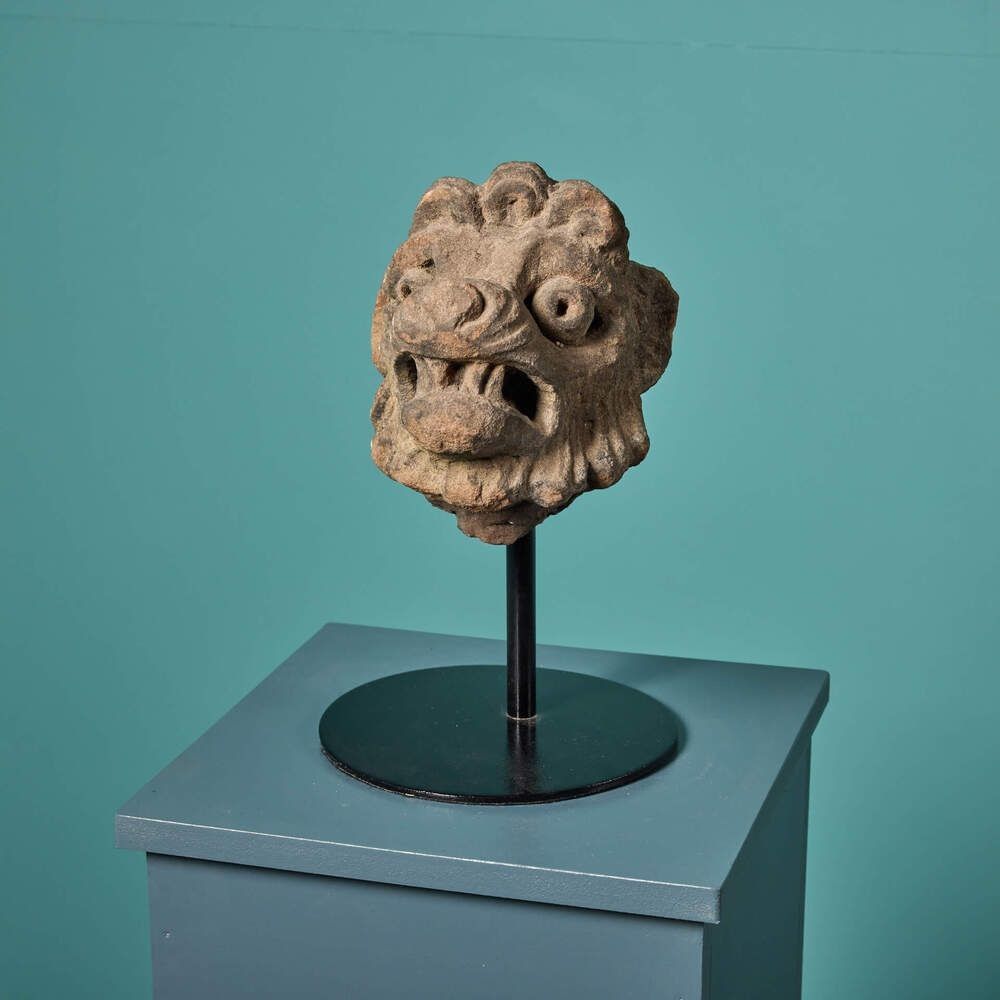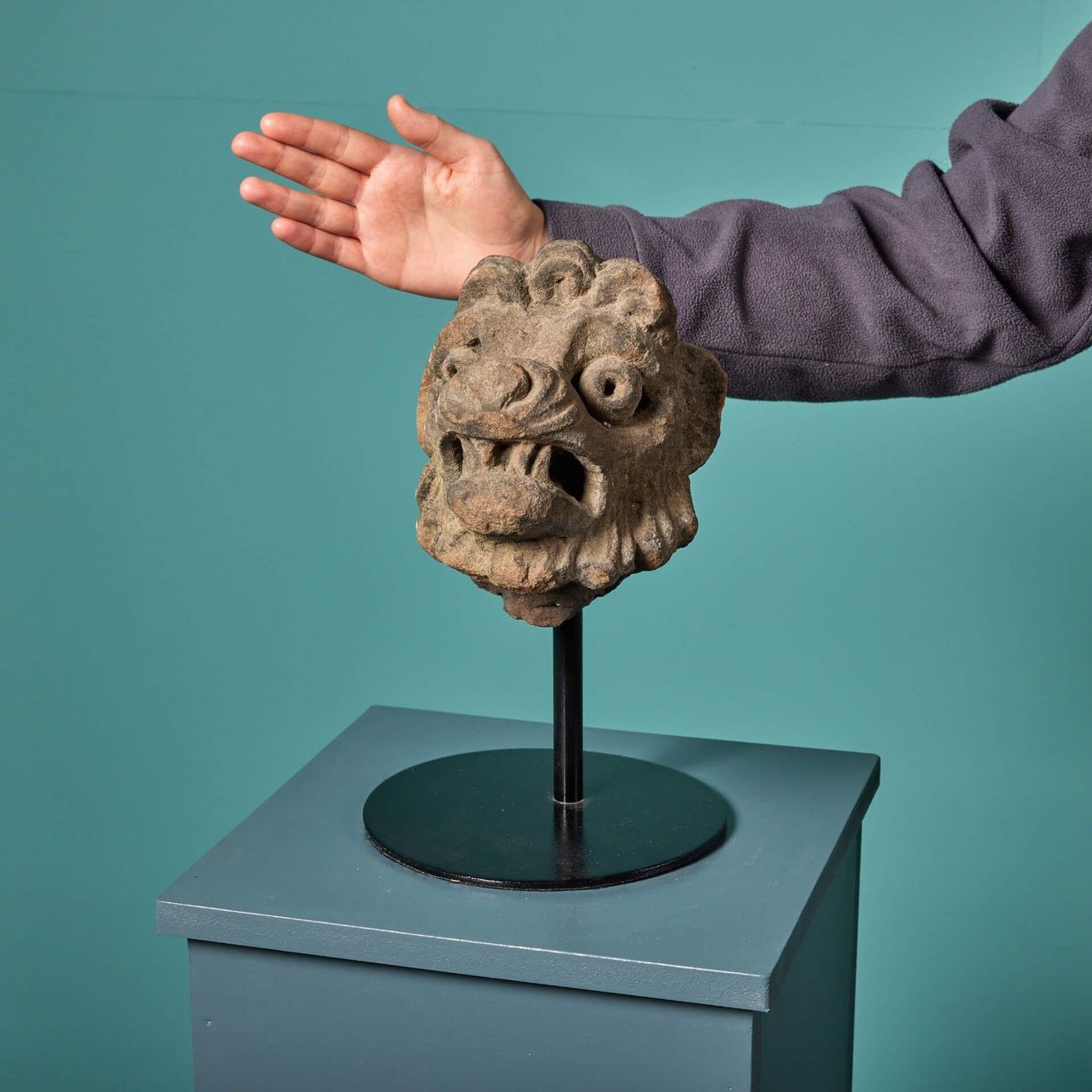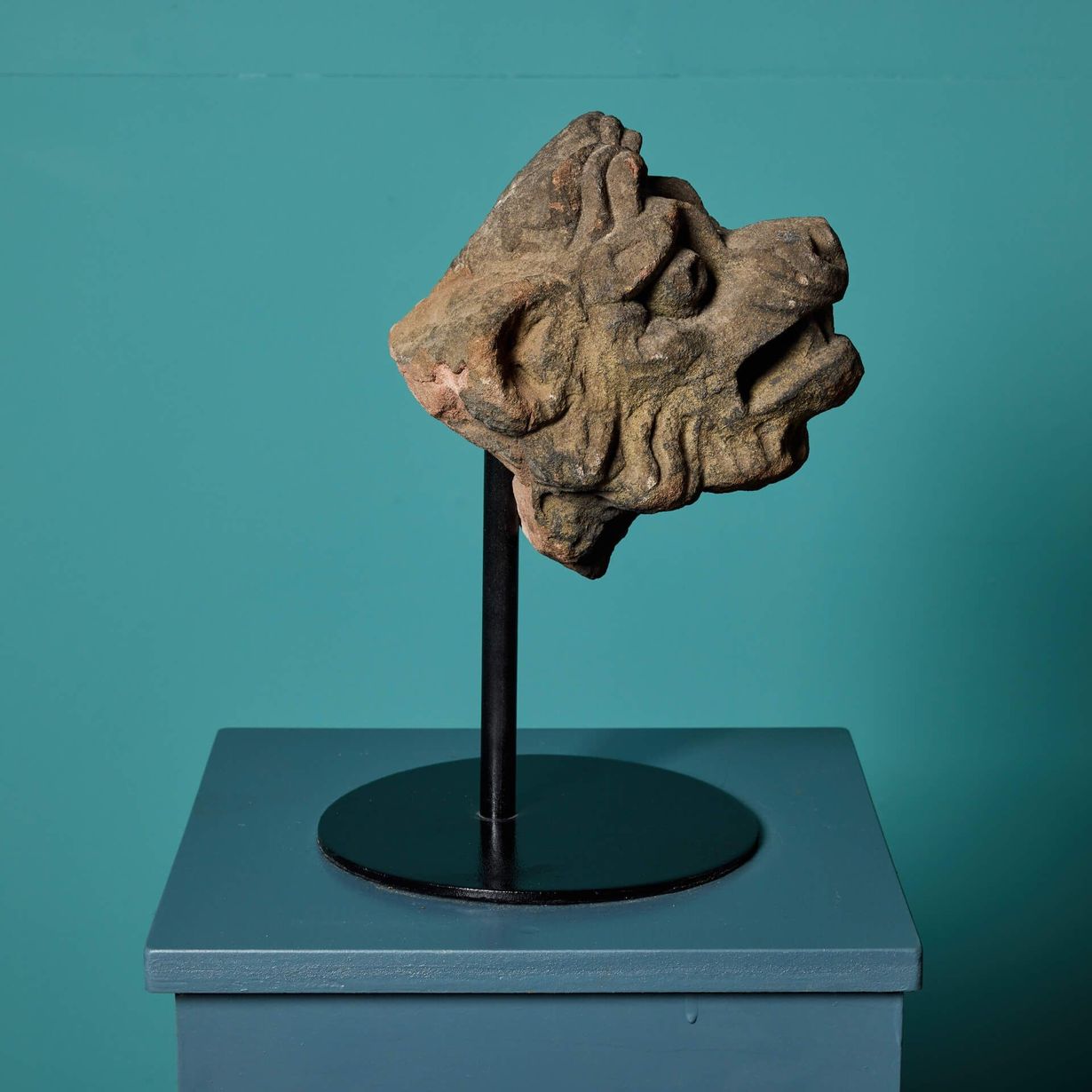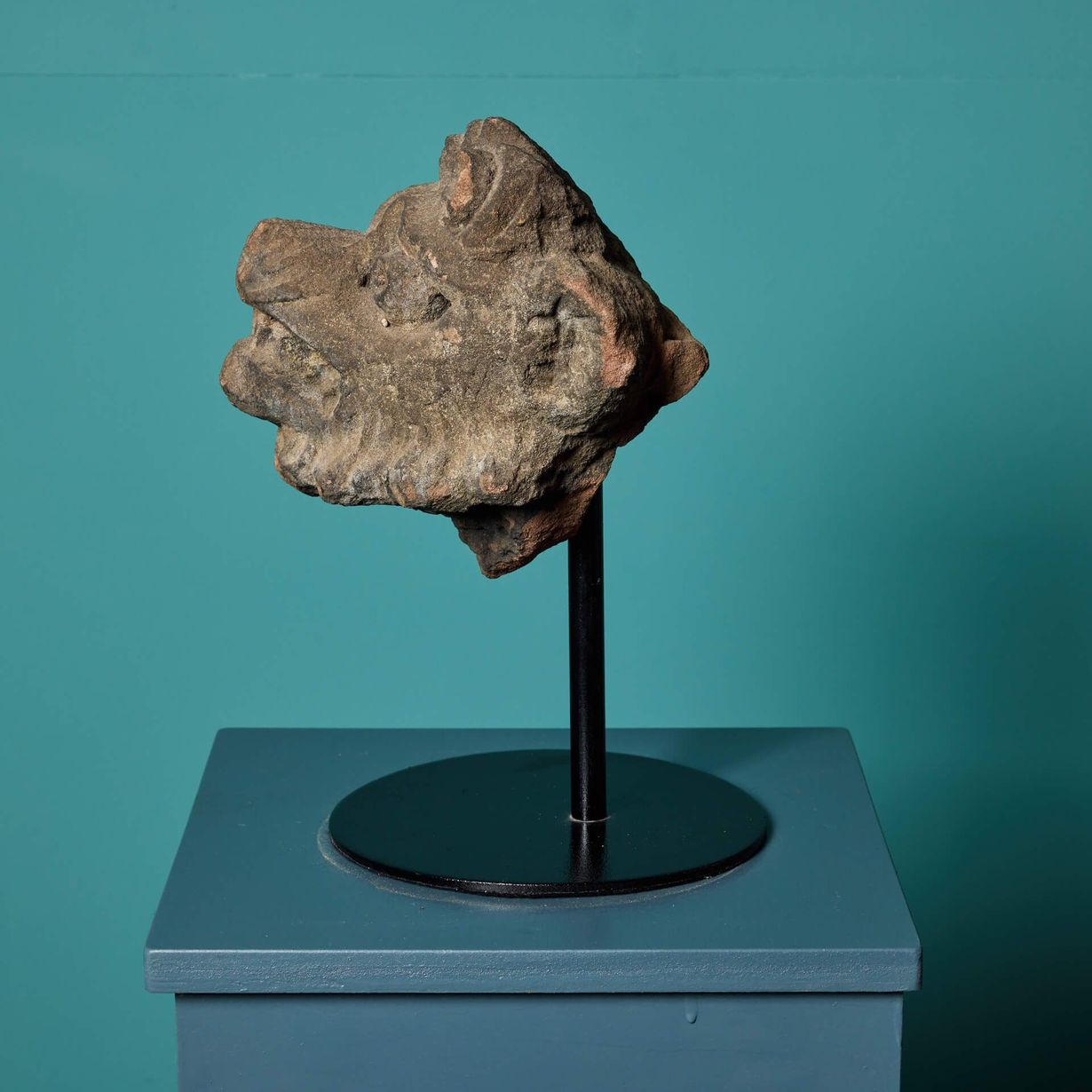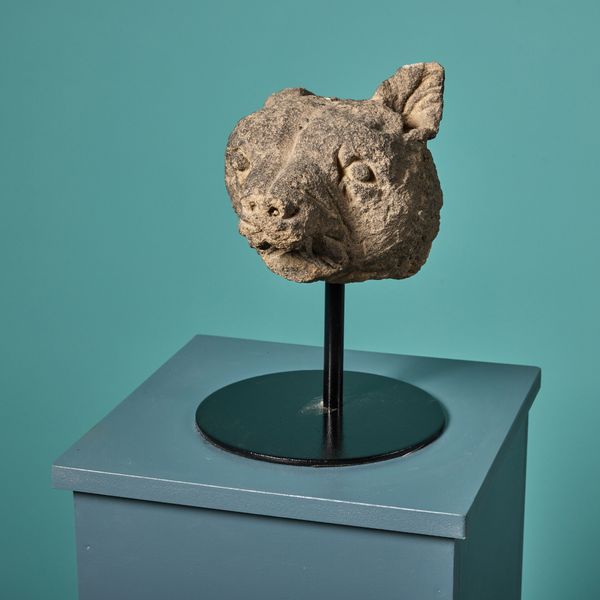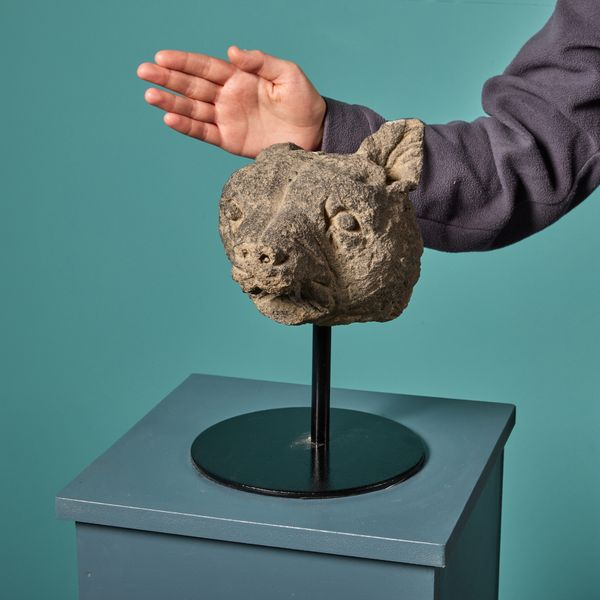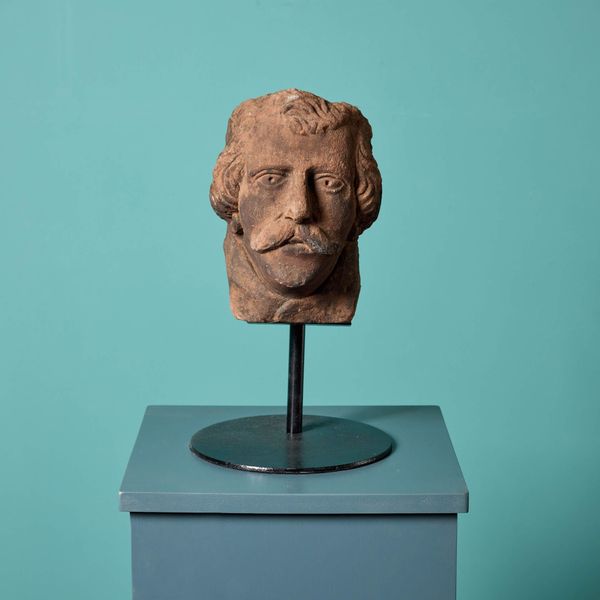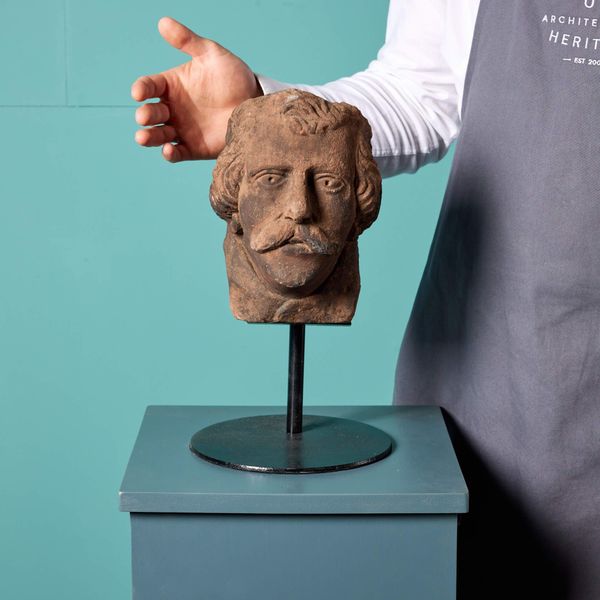About this piece
back to topAn antique carved sandstone head of a lion, mounted to a custom steel display stand. This interesting looking lion dates back hundreds of years to the Stuart period in the 1600s – a time when lion-baiting was a new and popular source of entertainment, even enjoyed by King James I (1603-1625).
This wonderful sculpture was a part of a corbel in a grand English house. It could now be displayed as a decorative piece inside a home, pride of place, ready for its owner and guests to peer at and perhaps question. It could also be part of a collection of sculptures from the same period.
It has stood the test of time with elements, such as its ears, snout, and detailed mane, still intact. Its features are certainly eye-catching and leave room for the imagination.
Lion baiting
Much like bearbaiting, the lion baiting was staged for the amusement of the court. It was first recorded in 1610, during the reign of King James I, of the Stuart period.
The king requested Edward Alleyn, master of the Bear garden, to acquire the three largest and most courageous dogs.
They were sent into the lion’s cage and all but one met their fate.
The third dog survived his fight and was nursed back to health with great care by the King’s son, Henry Frederick, Prince of Wales.
Prince Henry is said to have declared: “He had fought the king of the wild animals and should never again have to fight baser creatures!” The dog had gained itself a safe life at the English Royal court.
Lion-baiting was later banned outright in England following an 1835 act of parliament, but a few remnants of its history have survived today – this sculpture being one.
Additional dimensions
Diameter of the base: 20cm (7.87 in)
Height of the head: 21cm (8.27 in)
Width of the head: 22cm (8.66 in)
Depth of the head: 18cm (7.09 in)
